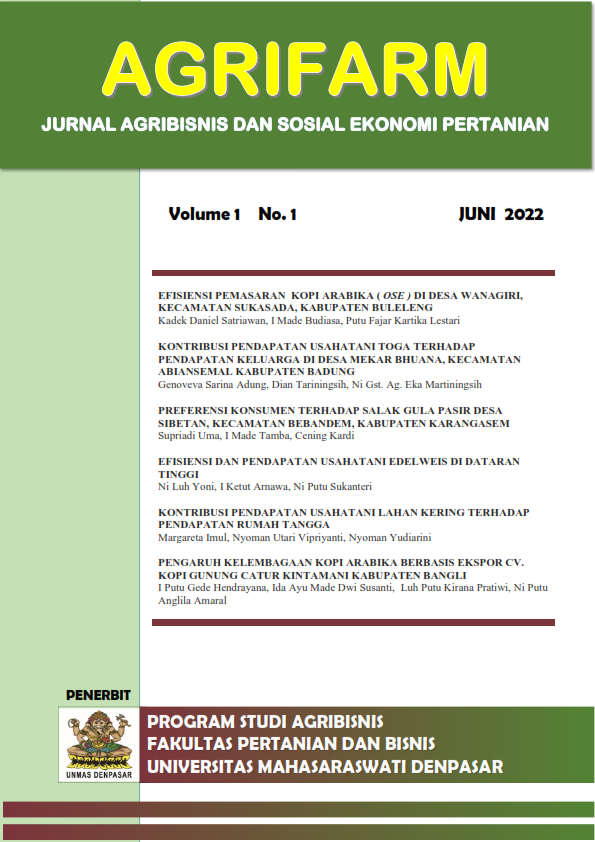PENGARUH KELEMBAGAAN KOPI ARABIKA BERBASIS EKSPOR CV. KOPI GUNUNG CATUR KINTAMANI KABUPATEN BANGLI
Kata Kunci:
Institutional Role, Export System, Likert ScaleAbstrak
This study aims to (1) To determine the institutional role applied in CV. Gunung Catur Coffee in Catur Kintamani Village (2) Analyzing the export system applied in CV. Mount Catur Coffee in Catur Kintamani Village. This research was conducted from October 2021 to December 2021. The types of data in this study are quantitative data and qualitative data. Sources of data in this study are primary data and secondary data. Methods of collecting data through observation, interviews, questionnaires, literature study, and documentation. The data obtained in the field were analyzed through Likert scale analysis, and quantitative analysis techniques. Based on the analysis of research in the field, the institutional role of Arabica coffee in CV. Gunung Catur coffee indicators are quite good and get a score of 116.80 with an indicator percentage of 77.87% obtained from five statements. Green bean coffee export system on CV. Gunung Catur Coffee in Catur Kintamani Village as a whole is in a fairly good indicator and based on the research obtained a score of 116.50 with an indicator percentage of 77.67% obtained from four statements.

